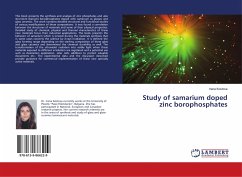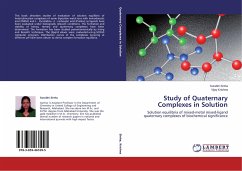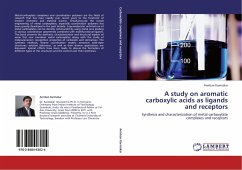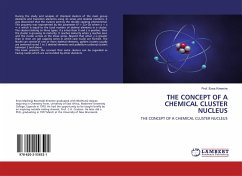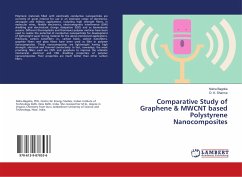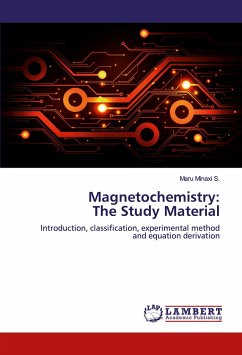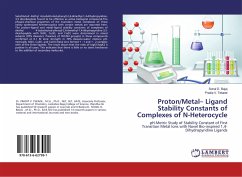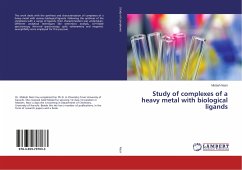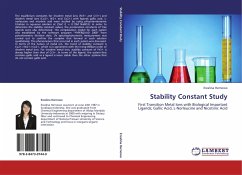
Stability Constant Study
First Transition Metal Ions with Biological Important Ligands; Gallic Acid, L-Norleucine and Nicotinic Acid
Versandkostenfrei!
Versandfertig in 6-10 Tagen
32,99 €
inkl. MwSt.

PAYBACK Punkte
16 °P sammeln!
The equilibrium constants for trivalent metal ions (Fe3+ and Cr3+) and divalent metal ions (Cu2+, Ni2+ and Co2+) with ligands gallic acid, L-norleucine and nicotinic acid were studied by using pH-potentiometric titration in aqueous solution at 25oC (I = 0.15M NaNO3). In order to determine the stability constant values, the protonation constants of free ligands were also determined. The complexation model for each system was established by the software program HYPERQUAD 2008 from potentiometric titration data. UV spectrophotometric measurement was carried out to confirm the complex that formed ...
The equilibrium constants for trivalent metal ions (Fe3+ and Cr3+) and divalent metal ions (Cu2+, Ni2+ and Co2+) with ligands gallic acid, L-norleucine and nicotinic acid were studied by using pH-potentiometric titration in aqueous solution at 25oC (I = 0.15M NaNO3). In order to determine the stability constant values, the protonation constants of free ligands were also determined. The complexation model for each system was established by the software program HYPERQUAD 2008 from potentiometric titration data. UV spectrophotometric measurement was carried out to confirm the complex that formed in each solution qualitatively. The phenomenon that occurred in each system was discussed. In terms of the nature of metal ion, the trend of stability constant is Cu2+Ni2+Co2+, which is in agreement with the Irving-William order of divalent metal ions. For trivalent metal ions, stability constant of Fe3+ is always higher than that of Cr3+. In terms of the ligand, the system that contains gallic acid as a ligand is more stable than the other systems that do not contain gallic acid.



